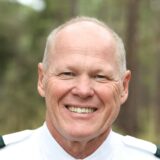
 A recent study from Florida State University’s Department of Earth, Ocean and Atmospheric Science makes bold, but unfounded declarations about the health of communities in South Florida.
A recent study from Florida State University’s Department of Earth, Ocean and Atmospheric Science makes bold, but unfounded declarations about the health of communities in South Florida.
The study, which made claims of dangerous particles emitted by sugar-cane burning, neglects data, ignores regulations in place to keep communities safe and disregards the importance of prescribed burning to our state’s ecosystem.
This study contained no actual on-the-ground facts or cause/effect data to back its claims.
During my four decades with the Florida Forest Service, including 12 years as Florida’s State Forester, I managed Florida’s prescribed burn program. Prescribed burning is a safe and effective tool for land management. Florida’s prescribed burn program is also highly regulated and closely monitored.
Florida follows a smoke management plan that protects populated areas from exposure to smoke.
The plan was developed by the Florida Forest Service in conjunction with the Florida Department of Environmental Protection (DEP) and the Florida Highway Patrol and approved by the U.S. Environmental Protection Agency (EPA).
As part of the plan, the Florida Forest Service uses weather forecasts and sophisticated smoke models to determine the best conditions for burning. Factors include the drought index, wind speed and direction, and atmospheric lifting.
The Florida Forest Service determines whether to issue a permit for prescribed burning on the day of a planned burn based on the area’s weather conditions.
Both the U.S. Fish and Wildlife Service and the EPA have acknowledged the effectiveness of the program in managing the land, protecting the people and improving our air quality.
On average, each year, the state of Florida authorizes more than 2 million acres of prescribed burning on both public and private lands, including agricultural lands, which has multiple beneficial environmental impacts and protects the lives and safety of our residents.
Prescribed burning removes threatening, invasive pests and limits the spread of forest disease. It contributes nutrients back into the soil, allowing for the healthy growth of plants and trees. It protects habitats for endangered species.
Without regular controlled fires, trees and vegetative areas get stressed by overcrowding, and flammable vegetation continues to build up.
Prescribed burning reduces the buildup of fuels that contribute to uncontrolled wildfires so that when wildfires inevitably occur, they burn with less intensity, reduced spread and fewer smoke impacts on communities and firefighters.
Prescribed burning can also contribute to better air quality through the reduction of catastrophic wildfires. In both the updating of the National Ambient Air Quality Standard (NAAQS) for PM 2.5 (81 CFR 164, pg. 58010) and the updating of the Exceptional Events Rule (81 CFR 191, pg. 68216), the EPA clearly documents the role of wildfire as an emissions source and the relevance of prescribed fire use and fuels management to reduce the risk of catastrophic wildfire.
DEP, under supervision of the EPA, monitors air quality across a network comprised of 177 monitors on 90 sites throughout the state. In 2021, DEP declared that the Sunshine State – for the second straight year — has the “cleanest air on record” and is “the most populous state in the United States to meet these stringent federal standards” for air quality.
As for South Florida, data reveals that the communities of the Glades enjoy some of the best air quality in the state and the nation.
Based on the data collected by DEP, the Glades region is classified as “good,” the highest level on a scale analyzing small particulate matter.
Florida’s prescribed burn program is the best in the country. We are a national model that other states look to replicate. Yet baseless studies seek to blame our prescribed fire program with conclusions that ignore these facts.
Good quality air is important to the health and safety of our communities. Florida’s prescribed burn program is in place for that very reason.
___
Jim Karels retired in 2020 as Florida’s State Forester after 35 years with the agency. For more than 12 years, he was responsible for protecting Florida and its residents from the dangers of wildfire and managing forest resources to ensure they are available for future generations. He also served in leadership roles on numerous national committees such as the Wildland Fire Leadership Council.




One comment
tom palmer
September 21, 2022 at 7:44 pm
It is important to point out that prescribed fire, which is indeed an important management tool for Florida’s conservation lands, occurs once every several years, Sugar cane burning occurs annually.
Comments are closed.